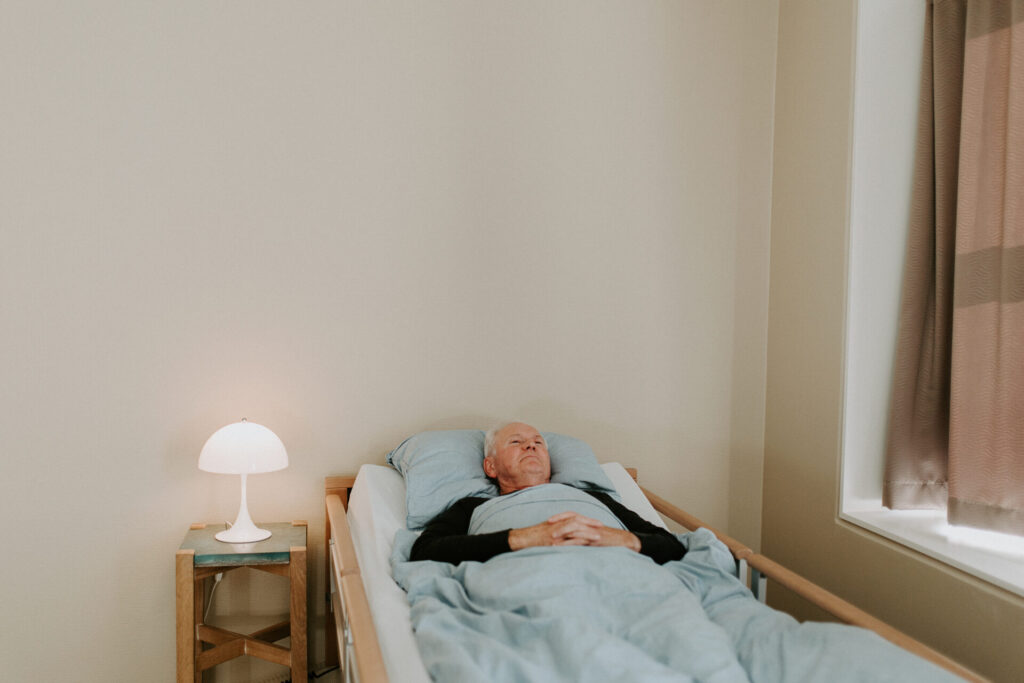Pressure ulcers, also known as pressure injuries or bedsores, are a serious health challenge that affects thousands of people each year, especially those with reduced mobility. Many people think that pressure ulcers start as a red spot on the skin, but the truth is that the damage often begins much deeper – below the surface of the skin, long before it becomes visible. In this article, you will gain important insights into how pressure ulcers actually occur, and why prevention must start before the external symptoms appear.
1. What is a pressure ulcer?
A pressure ulcer is an injury to the skin and underlying tissues that occurs as a result of prolonged pressure, often combined with shear forces and moisture. When the pressure reduces the blood supply to an area over time, the tissue dies. Typical places for pressure ulcers are bony protrusions such as the sacrum, heels, hips and elbows.
2. The damage occurs under the skin first
One of the most overlooked facts about pressure ulcers is that the injury begins deeper than what meets the eye. What often starts as an invisible ischemia (lack of oxygen) in muscle and fat tissue near bones gradually progresses upwards towards the skin. By the time it is detected as a red or purple spot, the tissue underneath may already be severely damaged or dead.
3. Why deeper tissues are more vulnerable
Muscle tissue has a higher oxygen requirement than skin, and is therefore more susceptible to pressure-related injuries. When you sit or lie in the same position for too long, tissue is pressed in layers against bone structures, and the pressure closes off small blood vessels (capillaries). This inhibits blood flow, which causes the cells in deeper tissues to not receive enough oxygen or nutrition – and they begin to die.
4. Pressure and time are crucial factors
It’s not just the pressure itself that’s dangerous – it’s the combination of pressure and time. Even moderate pressure can cause damage if it persists long enough. Studies show that sustained pressure of 32 mmHg (which is enough to prevent capillary blood flow) for 2–3 hours can start a tissue damage process.
5. External signs come late
When the pressure ulcer first becomes visible, it is often as a red or dark discoloration of the skin. Many people think this is the start of the damage, but it is rather a symptom of damage that has already occurred deeper in the tissues. In some cases, the skin may look intact while the tissue underneath is dead – this is called a “deep tissue injury” or “deep tissue injury” (DTI).
6. Shear and friction increase the risk
In addition to pressure, shear and friction play an important role in the development of pressure ulcers. Shear occurs when the skin remains at rest while the underlying tissue moves, such as when sliding into a bed or chair. This can stretch and twist the blood vessels, exacerbating tissue damage and accelerating the process under the skin.
7. Prevention must start before symptoms appear
Effective prevention of pressure ulcers is about understanding when and how they develop. It’s not enough to wait until the skin looks red – by then it may already be too late. Here are some key preventive measures:
-
Position changes: Change your lying or sitting position at least every 2 hours.
-
Pressure-relieving aids: Use special mattresses, pillows, or seat cushions.
-
Skin inspection: Examine the skin regularly for discoloration or heat increase.
-
Good nutrition: The right diet strengthens the skin and tissues.
-
Humidity control: Keep the skin clean and dry to reduce the risk of friction injuries.
Conclusion: Early insight saves skin and lives
Pressure ulcers are more than just a skin problem – they are serious tissue damage that often starts quietly, unseen and unmarked, below the surface of the skin. That is precisely why it is crucial to have good knowledge of how they arise and develop. With the right knowledge, systematic routines and the right aids, pressure ulcers can be largely prevented – before they ever become visible.

How Tidewave can help prevent pressure ulcers
One of the most effective methods for preventing pressure ulcers is regular and correct position changes – which is often difficult to carry out manually, especially at night. This is where Tidewave comes in as a groundbreaking tool. Tidewave is a solution that moves the patient slowly and continuously through the night, without the need for manual turning. This smooth and controlled movement reduces prolonged pressure on exposed areas and can thus contribute to better blood circulation – a key factor in preventing pressure ulcers from developing under the skin. The mattress has been specially developed to provide comfort, security and, not least, relief – both for users and healthcare professionals.
Want to learn more about how to treat pressure ulcers once they’ve occurred? Read our next article.
